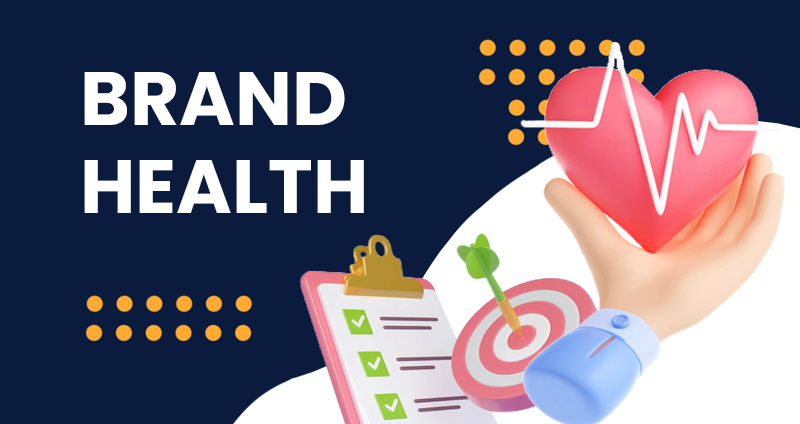In today’s fiercely competitive business landscape, a strong and healthy brand is vital for success. A brand is more than just a logo or a name; it’s the perception and emotions consumers associate with a company and its products or services. To ensure your brand is resonating with your target audience positively, you need to regularly assess its health and make informed decisions to improve it. One effective way to achieve this is through a Brand Health Survey.
What is a Brand Health Survey?

A Brand Health Survey is a structured questionnaire designed to gauge consumers’ perceptions, attitudes, and awareness of a brand. It collects valuable data that provides insights into how your brand is performing in the market and identifies areas that require improvement. The survey measures various key performance indicators (KPIs) related to brand awareness, perception, loyalty, and overall customer sentiment.
Why is Brand Health Important?
Maintaining a healthy brand is crucial for several reasons. Firstly, it helps you understand how your brand is perceived, allowing you to align it better with your business objectives. A strong brand also fosters customer loyalty, leading to increased customer retention and advocacy. Moreover, a positive brand image helps differentiate your offerings from competitors, driving customer preference and market share.
Designing Your Brand Health Survey
Before conducting a brand health survey, it’s essential to plan it carefully to ensure the data collected is relevant and actionable.
1. Defining Objectives and Key Metrics
Start by defining clear objectives for the survey. Identify what aspects of your brand you want to evaluate and improve. Common metrics include brand awareness, brand associations, brand consideration, and customer loyalty.
2. Choosing the Right Survey Methodology
Select a survey methodology that aligns with your objectives and target audience. Online surveys are cost-effective and efficient, while phone surveys or face-to-face interviews might provide more in-depth responses.
3. Selecting the Target Audience
Your survey’s success depends on reaching the right audience. Define your target demographics and ensure your sample size is representative of your customer base.
4. Crafting Effective Survey Questions
Create well-structured and unbiased questions that address your objectives. Keep the survey concise and easy to understand to maximize response rates.
5. Pilot Testing the Survey
Before launching the full survey, conduct a pilot test with a small group to identify any issues or ambiguities in the questions.
6. Administering the Survey
Once you’ve finalized the survey, administer it to your target audience. Encourage participation through incentives and clear communication about the survey’s purpose.
7. Analyzing Survey Results
After collecting responses, it’s time to analyze the data to extract valuable insights.
8. Understanding the Data
Start by understanding the data distribution and demographics of the respondents. Categorize and segment responses to gain a deeper understanding.
9. Identifying Strengths and Weaknesses
Analyze the survey results to identify your brand’s strengths and weaknesses. Look for patterns and trends that provide actionable insights.
10. Benchmarking Against Competitors
Compare your survey results with your competitors’ data to gain a competitive advantage. Identify areas where you outperform and areas where you can improve.
11. Spotting Trends and Patterns
Explore patterns and trends in consumer perception to anticipate future shifts in brand sentiment.
Addressing Brand Perception Challenges
Based on the survey results, you may need to address specific brand perception challenges.
1. Improving Brand Awareness
If brand awareness is low, invest in marketing efforts and brand exposure to increase visibility.
2. Enhancing Brand Image and Messaging
Refine your brand messaging and visual elements to resonate better with your target audience.
3. Dealing with Negative Perceptions
Address negative feedback constructively and transparently to rebuild trust with customers.
4. Leveraging Positive Associations
Identify positive brand associations and leverage them in your marketing campaigns.
Implementing Changes and Measuring Progress
Implement actionable strategies based on survey insights and track their impact over time.
1. Formulating Actionable Strategies
Develop a comprehensive action plan with measurable objectives to improve brand health.
2. Monitoring Changes Over Time
Track changes in brand health metrics periodically to assess the effectiveness of your strategies.
3. Conducting Periodic Surveys
Regularly conduct brand health surveys to monitor progress and make continuous improvements.
Brand Health and Customer Loyalty
Brand health and customer loyalty are interconnected.
1. Understanding the Link
Satisfied customers are more likely to remain loyal to your brand, contributing to long-term success.
2. Building Customer Trust and Advocacy
Foster trust by delivering consistent, high-quality experiences that meet customer expectations.
The Role of Employee Perception in Brand Health
Employee perception plays a crucial role in shaping brand health.
1. Internal Brand Alignment
Ensure your employees understand and embody your brand values, as they are brand ambassadors.
2. Engaging Employees as Brand Ambassadors
Empower employees to promote the brand positively, both internally and externally.
Future Trends
As consumer preferences and behaviors continue to evolve, so will brand health surveys.
Conclusion
In conclusion, a Brand Health Survey is an indispensable tool for understanding how your brand is perceived in the market. By regularly assessing brand health, addressing challenges, and leveraging strengths, you can enhance brand loyalty, gain a competitive edge, and drive business growth.
Would you like to see how a Brand Health Survey can benefit your business? Request a demo from AIM Technologies today and discover the power of understanding your brand’s performance firsthand.
FAQs
1. What is the ideal frequency for conducting brand health surveys?
- Conduct brand health surveys at least once a year, but the frequency may vary depending on your industry and business goals.
2. Can brand health surveys be conducted for small businesses?
- Absolutely! Brand health surveys are valuable for businesses of all sizes to understand their brand perception.
3. How can I ensure high response rates for my survey?
- Offer incentives, keep the survey short, and communicate the importance of participants’ feedback.
4. Is there any software that can help in analyzing survey data?
- Yes, there are various survey analysis tools available that can help in efficiently analyzing survey data.
5. What are some common mistakes to avoid while designing a brand health survey?
- Avoid leading questions, vague language, and biased response options to ensure accurate results.




